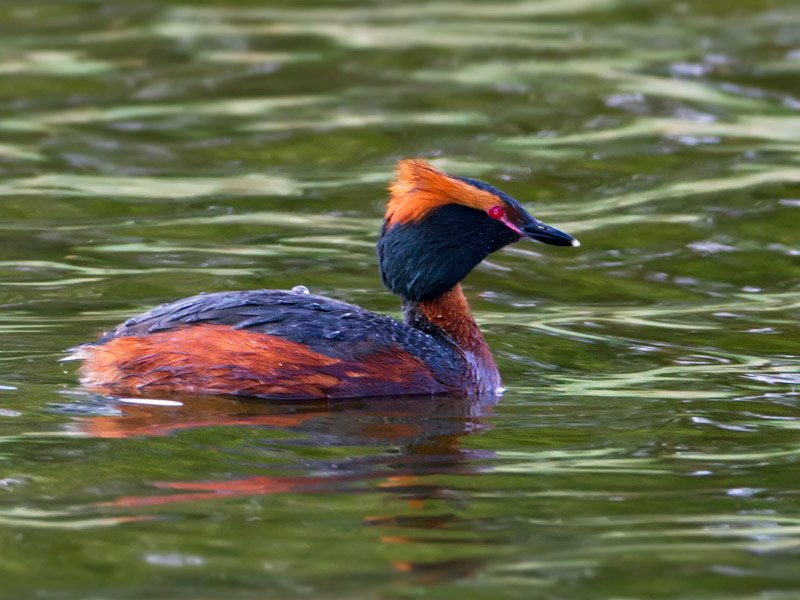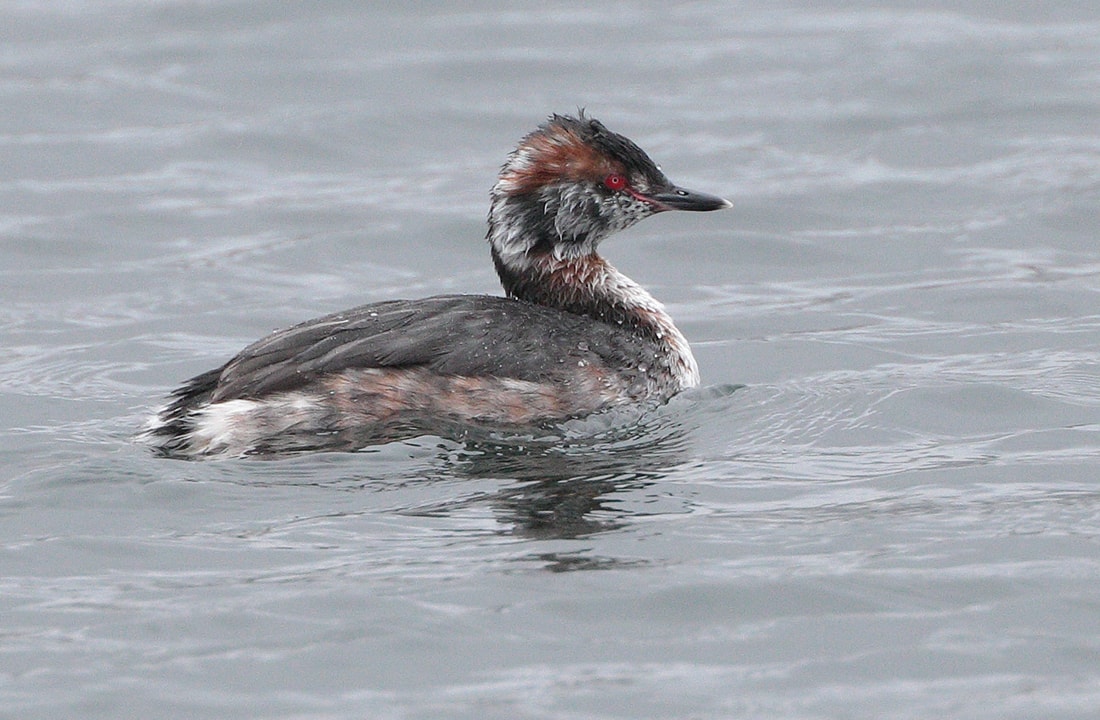
Slavonian Grebe Scottish Highlands Jane Turner Flickr
Loch Ruthven holds the largest British population of the rare water-bird Podiceps auritus, the Slavonian or horned grebe. The breeding success of this bird has fluctuated annually since records began in 1970. To investigate whether these trends are linked to the abundance of chironomid midges, which are an important food-source for the grebe chicks, we analysed a sediment core from the lake.

Slavonian Grebe wildlife photography
The Slavonian grebe's splendour is enhanced by its rarity: there are fewer than 30 breeding pairs in Britain, spread out across the Scottish Highlands. Being relatively unknown, it might not.

Slavonian Grebe Bird Identification Guide Bird Spot
The horned grebe or Slavonian grebe (Podiceps auritus) is a relatively small and threatened species of waterbird in the family Podicipedidae. There are two subspecies: P. a. auritus, which breeds in Eurasia, and P. a. cornutus, which breeds in North America. The Eurasian subspecies is distributed over most of northern Europe and northern Asia, breeding from Greenland east to the Russian Far East.

Birds Scottish Landscape Photography by Grant Glendinning
In Eurasia, Slavonian Grebes breed in a broad front from Iceland and Scotland in the West to Russia's Kamchatka Peninsula in the East. These birds migrate to coastal areas around Western, Northern, and Southern Europe, parts of the Middle East, and the coast of China, Japan, and South Korea.. Slavonian Grebe. Family: Grebes. Conservation.

Shropshire Birder Scotland Slavonian Grebe part 1
Slavonian Grebe Podiceps auritis Arguably the most attractive of the UK's breeding grebes, with its golden ear tufts and trilling calls. It looks similar to the black-necked grebe in winter but has whiter cheeks which almost meet at the back of the neck. Due to its small breeding population it is an Amber List species.

Slavonian Grebe Wildlife Photography
Abstract The Slavonian Grebe Podiceps auritus was first recorded breeding in Scotland in the early 1900s. Since then, numbers have fluctuated, reaching a peak in the 1970s before declining again. There are numerous lochs and other bodies of water in Scotland that appear to be suitable for breeding Slavonian Grebes but pairs have never occupied more than just some of these

Slavonian Grebe at Avielochan Scotland ( 1 ) 25/05/16 Flickr
Watch on From Great Crested and Red-necked to Slavonian and Black-necked, separating grebes in winter plumage can be challenging. This identification video from the BTO discusses all the features to help identify them with confidence. BTO bird identification videos are supported by Natureguides

Slavonian Grebe by Allan Chard BirdGuides
The breeding population of Slavonian Grebes numbered just 46 breeding pairs in 2002, with all birds confined to Scotland. A favoured site is the RSPB reserve at Loch Ruthven ( NH6127) where 23 pairs were present in 2002.

Slavonian Grebe Scotland 2017 Geoff Rowntree Flickr
They arrive in Scotland in March north and south of the Great Glen and in Strathspey. Half of the UK population nest in RSPB Loch Ruthven nature reserve and if you visit in June, you may be lucky enough to see parents carrying humbug-striped young chicks on their back.

Slavonian Grebe IMG_4301 Taken on a holiday in Scotland.… Flickr
Slavonian Grebes in Highland Scotland in 1993. They were selected throughout the breeding range and included lowland and upland lakes. To make a compari-son with the Grebe lakes, an additional 25 lakes were chosen close to the Grebe lakes, where breeding had never been known to take place, or where breeding

Slavonian Grebes , Scottish Highlands.. Paul Jessett Flickr
Like other grebes, Slavonian chicks have a characteristically black-and-white striped head pattern, rather like an old-fashioned humbug. Named after a region in eastern Croatia, the adult.

slavonian grebe One of a dozen on a loch in Scotland T. Keith Bruce Flickr
British Wildlife 15.1 October 2003 Conserving Scotland's Slavonian Grebes Stuart Benn Pages 25-30 Sadly, most people have either never heard of the Slavonian Grebe Podiceps auritus or know it only as a rather dumpy, nondescript bird bobbing around on a choppy winter sea.

slavonian grebe cairgorm national park scotland colin scott Flickr
Slavonian Grebe Podiceps auritus (Linnaeus, 1758) SZ SLAGR 110 Family: Podicipediformes > Podicipedidae As with most grebe species, Slavonian Grebes look very different in their summer and winter plumages and choose different habitats in the two seasons. The story of changing status of Slavonian Grebes in Britain differs between the seasons too.

Slavonian Grebe (Podiceps Auritus) in Burghead Harbour, Scotland YouTube
Slavonian grebe have had one of their best breeding seasons this year New research is to be done into the behaviour of one of the UK's rarest birds. Breeding pairs of Slavonian grebe can.

FileSlavonian Grebe, Scotland.jpg BirdForum Opus BirdForum
12 January 2012 Slavonian grebes were not found at lochs where there were pike Factors influencing where one of Scotland's rarest birds chooses to breed have been investigated. Slavonian.

Slavonian Grebe , Scottish Highlands.. Paul Jessett Flickr
About Grebes are diving waterbirds, feeding on small fish and aquatic invertebrates. The Slavonian grebe is one of the UK's rarest nesting birds, which can be spotted on a few lochs in Scotland and at sea the rest of the year. It is about the same size as a moorhen. It sometimes turns up on big lakes and reservoirs. How to identify